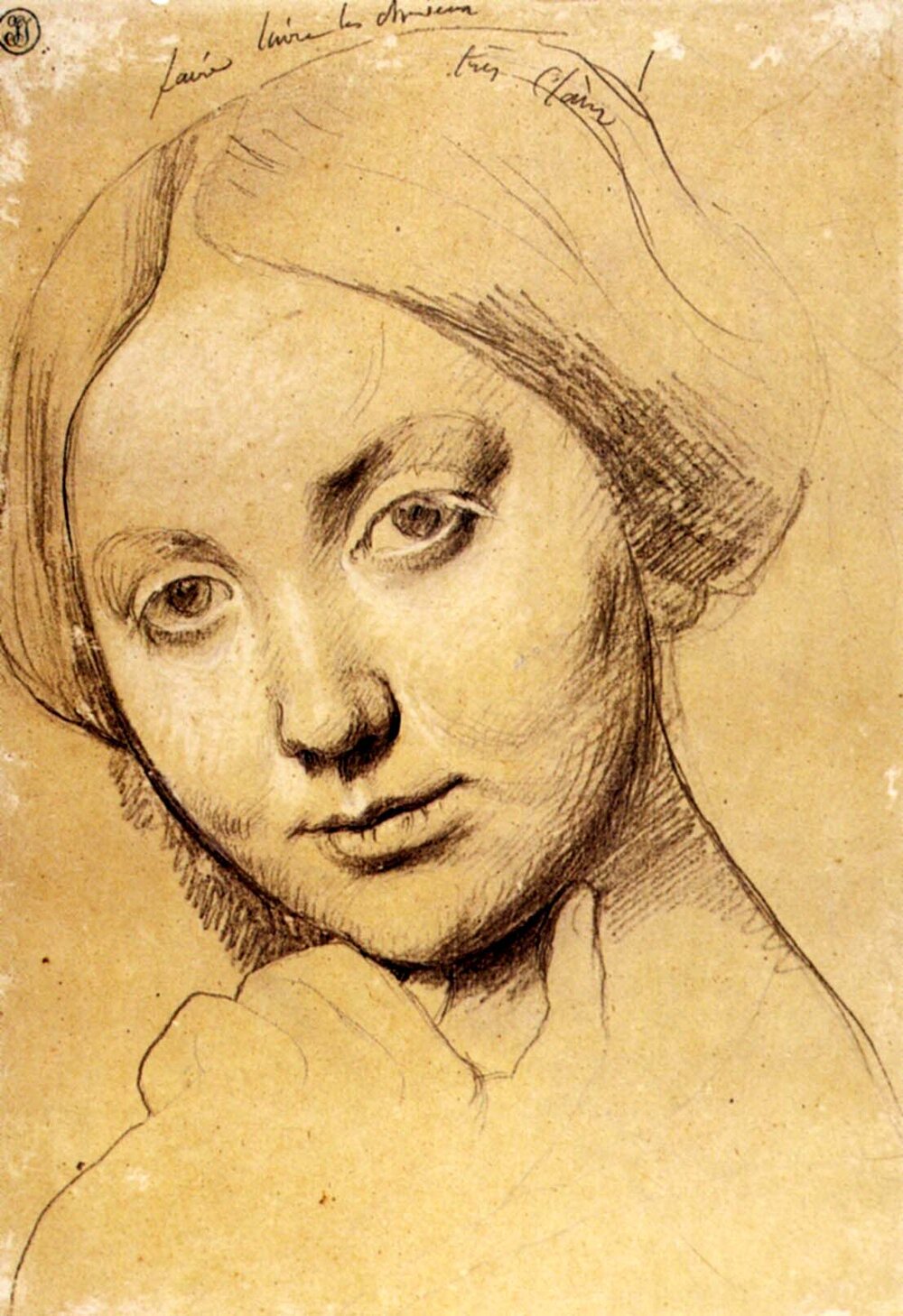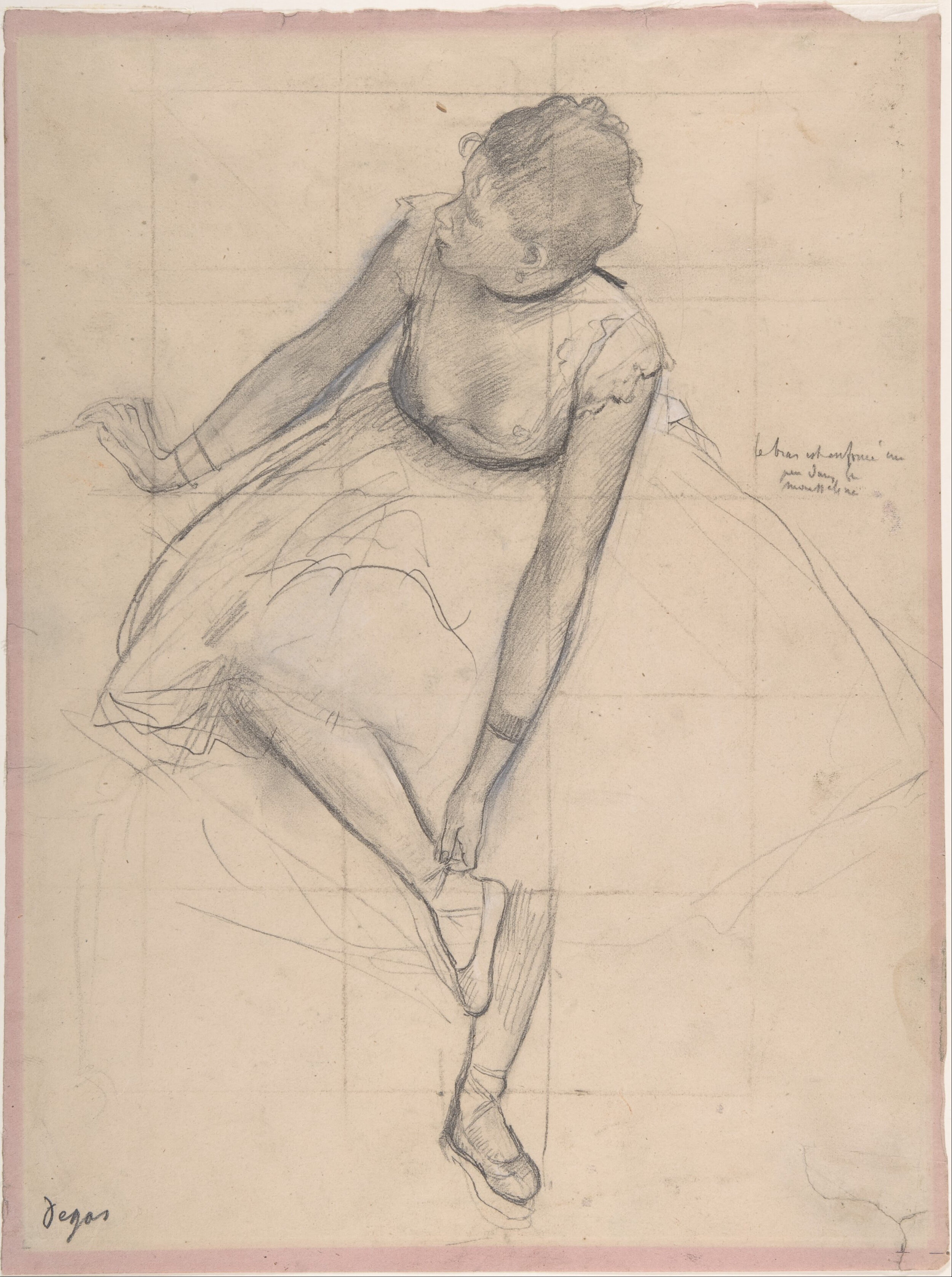NEO-CLASSICISM
Neo-Classicism, which had developed in the 18th century as a reaction against Baroque and Rococo, reached new heights in the Napoleonic era. Drawings by the French painter Jacques Louis David (1748-1825) and Italian sculptor Antonio Canova (1757-1822) describe the idealise heroic figures from classical antiquity, while the sinuous, clean lines of Jean Auguste Dominique Ingres (1780-1867) depict handsome but inscrutable models such as Louise de Broglie, the Countess d’Haussonville and Merry-Joseph Blondel. The drawings of the English sculptor John Flaxman (1755-1826) and North American painter Benjamin West (1738-1820) present a different variant of Neo-Classical style in which the depiction of the natural world seems to look across to the work of Romantics .
Just how important drawing was to Ingres is clear from his statement, "Drawing is not just reproducing contours, it is not just the line; drawing is also the expression, the inner form, the composition, the modelling. See what is left after that. Drawing is seven eighths of what makes up painting." The subject of this portrait, Merry-Joseph Blondel, was a fellow painter of the Neoclassical school.
For a very informative account of Ingres’ use of materials and drawing techniques, see this blog written to coincide with an exhibition of the artist’s work at the Morgan Library and Museum in 2011
https://www.themorgan.org/blog/ingres-morgan-materials-and-methods
This illustration was produced by John Flaxman RA, the British Neoclassical sculptor and draughtsman, for Milton’s Paradise Lost. Flaxman’s illustrations of Homer, Aeschylus and Dante were famous, but he only produced a few illustrations of Milton allegedly because he did not want to compete with Henry Fuseli, who worked on forty paintings of scenes from 'Paradise Lost' for nearly a decade before exhibiting them at his own Milton Gallery in 1799-1800.
ROMANTICISM
Although the seeds of Romanticism were sown in the visionary paintings of Blake and Fuseli, it was only at the turn of the 19th century that artists such as Caspar David Friedrich, J.M.W. Turner, and to some extent John Constable, began to depict wild landscapes and seascapes which suggested “a longing for the unbounded and the undefinable” (Isaiah Berlin, 1965). Human beings, in these paintings, are insignificant compared to nature which, contrary to the teachings of the Enlightenment, cannot be dominated. In the United States these ideas were embraced Hudson River School artists such as Thomas Cole (1801-1848) and Frederic Edwin Church (1826-1900). The roots of Romanticism in France lay in historical paintings commissioned to celebrate Napoleon’s victories, but within a few decades artists such as Théodore Gericault (1791-1824) and Eugène Delacroix (1798-1863) were producing more critical works. The mid-19th century British Pre-Raphaelite movement also held to a Romantic conception of nature and individual expression, but its primary concern was to reject the classical tradition which artists such as Dante Gabriel Rossetti (1828-1882) traced back to Raphael.
REALISM
The Realist movement began after the 1848 Revolution in France with artists such as Gustave Courbet and Honoré Daumier depicting common labourers in naturalistic scenes as a reaction to the idealisation of both Romanticism and Neo-Classicism. Charcoal and graphite, which had always played a role in preparatory drawings, now assumed greater importance, used as if to coat the images in soot and grime. Daumier’s watercolours of first-, second- and third-Class railway carriages are particularly memorable, not least because it is the second-class passengers who look most unhappy while the ones in third-class seem resigned to their fate. The North American Winslow Homer, who studied in Paris in the 1860s, took the Realists’ ideas back home but himself employed a brighter palette to create scenes which spoke of affection rather than anger.
IMPRESSIONISM
A reaction against the academic painting and drawing which had dominated artistic practice since the Renaissance, Impressionism sought to record ordinary life, accurately and objectively and to capture the transient effects of light, colour, and movement. Artists such as Claude Monet (1840-1926), Camille Pisarro (1830-1903) and Berthe Morisot (1841-1895) often worked outdoors (‘en plein air’), making quick and delicate marks with pencils and finely sharpened chalks, and often adding in touches of colour in watercolour and pastel. Like Morisot, the North American Mary Cassatt (1844-1926) was one of a new generation of artists to depict “New Women” at a time when women’s rights were a topic of increasing interest. Edgar Degas (1834-1917) and Pierre-Auguste Renoir (1841-1919) maintained a traditional, linear approach, but, as the drawings below reveal, they too were fascinated by movement. Degas’s dancers are amongst the most evocative drawings ever produced.
Corot was a leading member of the French Barbizon school who took inspiration from Constable in making nature the subject of their work. Although his portraits conform to the prevailing Neo-Classical style, his landscapes, painted outdoors, were influential in the development of Impressionism.
One of the most talented students at the Académie Julian in Paris, Rose-Marie Guillaume (1876- ca. 1930) played a long-standing role in the Academy’s history. Founded in 1868 by Rodolphe Julian, a former wrestler and painter, the Académie became one of the leading teaching institutions in Paris for young artist. Unlike the state-run Ëcole des Beaux-Arts, it was open to women students for whom Julian from about 1876 ran separate - and more expensive - studios.

















































